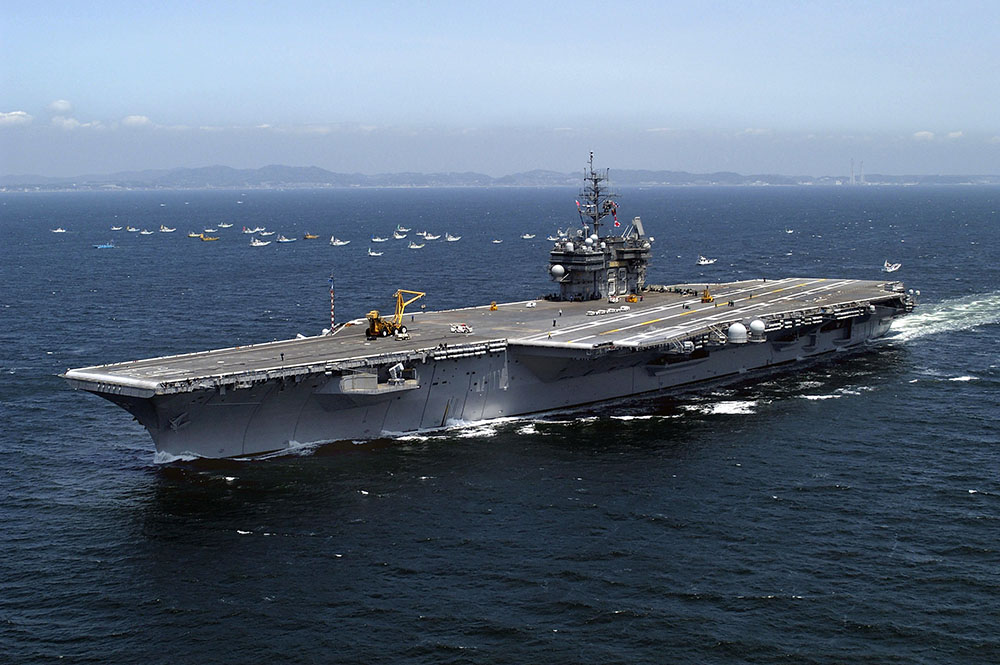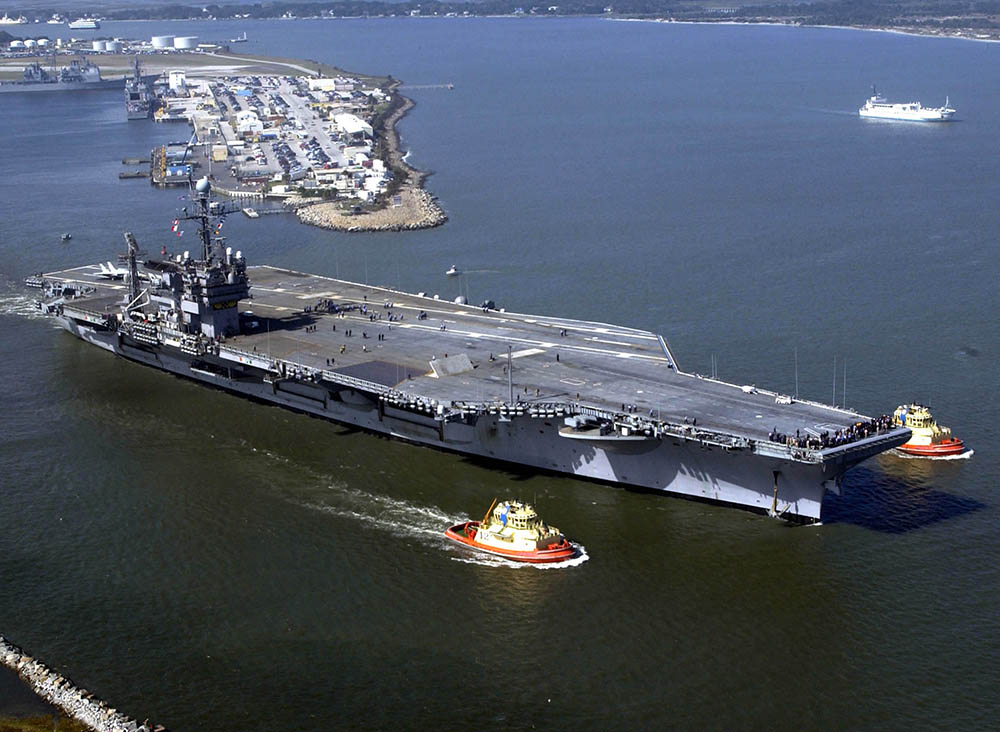Another pair of massive, weary warriors are set to make Brownsville their final resting place.
The Navy has chosen International Shipbreaking Ltd./EMR Brownsville to dismantle two decommissioned aircraft carriers, the USS Kitty Hawk (CVA-63) and the USS John F. Kennedy. Per ISL’s contract with the Navy, the ship-recycling company will be paid a penny each for the historic vessels and tow them to Brownsville for scrapping.
The Kitty Hawk, commissioned in 1961 at the Philadelphia Naval Yard and decommissioned in 2009, is currently mothballed at a Navy facility in Bremerton, Wash., while the JFK, commissioned in 1968 at Newport News, Va., and decommissioned in 2007, is anchored at the Philadelphia Naval Yard.
ISL Senior Manager Chris Green said a team of experts from the company will be in Washington next week to begin preparing the Kitty Hawk for towing, a process that usually takes between 30 to 45 days depending on what needs to be done.
“I’ve personally inspected her, so I know she’s in good shape for towing,” he said.
Green said the trip from Bremerton through the Strait of Magellan and back up to Brownsville could take between 10 and 18 weeks depending on how powerful a tug the company hires, and estimated that the vessel will reach Brownsville late in the first quarter of next year.
The JFK won’t have to be towed nearly as far, though it may still be several months behind the Kitty Hawk, Green said. The JFK, a variant of the Kitty Hawk-class of carrier, has a special hull compared to other carriers of its vintage. The Navy prefers to keep the engineering involved under wraps, which means ISL employees have to undergo a background check compliments of the Defense Counterintelligence and Security Agency, which can take a while, Green said.
“That process can take a short amount of time or it can take up to six months,” he said. “It just really depends on their schedules and sometimes they’re really swamped. … I’d hate to put a timeline on the JFK right now just because of those questions marks.”
ISL in recent years has also recycled the former carriers USS Constellation, USS Independence and USS Ranger, while other shipbreakers at the Port of Brownsville have dismantled the decommissioned USS Forrestal and USS Saratoga. In some cases ISL receives large payments from the Navy to tow and dismantle military vessels. In other cases it is financially feasible for the company to accept the contract with essentially no payment from the Navy, Green said.
That was the case with the Ranger, he said. Landing contracts for the JFK and Kitty Hawk at the same time, plus the fact that the JFK will be a relatively short and easy tow, means the numbers work in a two-cent transaction with the Navy in this case, Green said. While normally it takes about two years to take apart an aircraft carrier this size, he said, having both ships on site simultaneously could shorten the timeline to three rather than four years for both ships.
Green said such historic vessels are hugely important to many of those who served on them, and that typically hundreds of veterans show up to watch the carriers enter the jetties. ISL has an eBay store where veterans or their families can buy mementos from specific ships preserved during the recycling process, and the company usually holds ceremonies to honor the veterans and the vessels themselves, he said.
Green noted that the company fields many, many requests from veterans requesting the chance to walk the big ships’ decks one last time.
“Unfortunately per contract we’re not allowed to do anything like that,” he said. “We had over 1,500 people call wanting to come see (the Constellation) arrive, and we had planned on doing some type of arrival ceremony and having veterans participate, but the numbers just got too big for our ability to handle.”
An arrival ceremony was held at Isla Blanca Park, however, a prime spot for watching the carriers come in, and ISL plans to approach the county about something similar for the JFK and Kitty Hawk, Green said.
“The carriers are special because they touched so many people’s lives,” he said. “I’ve heard a whole lot of stories.”

Capt. Robert Berry, ISL’s vice president, who will head to Bremerton next week with the rest of the ISL prep-team, said he’s “spoken to literally thousands of people that served on these (ships).”
“You know the average carrier had over 100,000 people serve on it? And most of those people it turns out, according to the organizations for each carrier, are still alive,” he said. “We hear from a lot of them.”
Berry said the ships’ veterans seem to appreciate the tributes, including the ceremonies ISL holds when the last piece of each vessel is hoisted from the water. He said he doesn’t know what type of observance will be held for the Kitty Hawk and JFK and former crew members but that he anticipates something will come together.
“We very likely will,” Berry said. “That’s off in the future a ways, but my guess is we’ll do something.”
RELATED READING
Learn more about the USS Kitty Hawk: https://en.wikipedia.org/wiki/USS_Kitty_Hawk_(CV-63)
Learn more about the USS John F. Kennedy:
https://en.wikipedia.org/wiki/USS_John_F._Kennedy_(CV-67)




